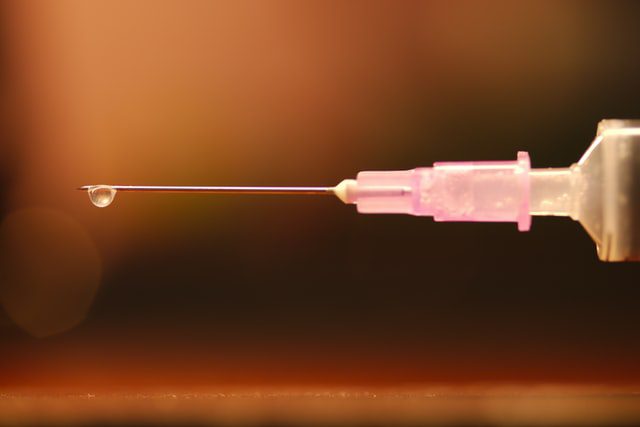
FTM Testosterone Dosage Information
Before continuing this article, we need to state that we do not advise taking any kind of medications or hormone therapy without consulting with a medical professional. We also need to note that the information provided here is generalized and does not account for differences and intricacies in individual physiologies. We provide this information in order to bring options to the attention of transgender patients and to empower them to have informed conversations with their doctors.
It seems that information available online, if not extremely outdated, varies significantly from one site to another, so it is challenging to establish dosage information that can be seen as ‘accurate’. Where possible, we have included dosage ranges for mainstream exogenous testosterone therapy. Any alternative therapies listed here should be explored under medical supervision.
That being said, there is some standard information available that we can share in this article.

Goals of Gender Affirming Hormone Therapy
Although this article focuses mainly on FTM transitions, it should be mentioned that anyone seeking masculinizing hormone therapy could benefit from these medications, which includes non-binary individuals who want to reduce female secondary sex characteristics.
We are aware that not everyone wants to undertake hormone therapy on a long-term basis. Should you wish to only take hormones for a while, it is best to bring this to your doctor’s attention from the start. It might require the doctor to come up with a different regimen that they usually use for long-term cases. You will also need to understand which testosterone-related changes are reversible and which are not. When you stop treatment, some things might go back to how they were before, but others, such as the deepening of the voice, will not change.
Specifically, the aim of this kind of treatment is the development of male secondary sex characteristics through clinical response. For example:
- Increased facial hair growth
- Decreased breast tissue
- Increased muscle mass
- Increased body hair
- Deepening of the voice
- Redistribution of body fat
- Changes in body weight
This is achieved through increasing testosterone levels to fall within the normative range for cisgender men.
Contraindications for Hormone Therapy
Unfortunately, there are some situations where a person would not be eligible for hormone therapy. This is another reason why it is essential to consult with a doctor before commencing any hormone treatment.
Some basic contraindications for testosterone therapy include:
- Pregnancy
- If you are not pregnant, but if you still have a uterus, it is strongly advised that very effective birth control steps are taken as testosterone is a teratogen.
- Breastfeeding
- Coronary Artery Disease
- History of hormone-sensitive cancer like endometrial or breast cancer.
- Hypersensitivity to testosterone
- Psychosis
- Any condition that makes it difficult for informed consent to be established.
You might also want to bring it to the attention of your doctor if you have a compromised immune system. This is not necessarily a contraindication but is vital for the doctor to know and factor into their treatment plan.

Testosterone Therapy
Therapeutic doses of testosterone therapy are usually on par with normative levels present in cisgender men. Unfortunately, there is not enough research available out there on the long-term effects of androgens on transgender men; however, there are several case studies being done, and knowledge and understanding of the field continue to grow with each passing year.
Some individuals experience positive outcomes of a practice known as cycling. This practice involves the changing of dosage of a sex hormone so as to enhance positive effects and suppress negative effects. If you are interested in learning more about this, then feel free to bring it up in your information sessions with your doctor.
Regardless of the type of hormone regimens available, regular blood tests are necessary to assess hormone levels and to make sure that they remain within the physiologic male range. Excess testosterone can be very bad in the long run, and lower testosterone levels will not have the effects that transgender men are looking for. The blood tests and other tests are also used to monitor things like bone density, mineral levels, etc. to ensure optimal health for the duration of your treatment.
There are four types of testosterone that are often used for transgender hormone treatment. These are:
Testosterone Undecanoate
This can be taken orally or via injection (parenteral testosterone). It has more potent androgenic effects and weaker anabolic effects, which makes it more suitable to transition than options with more potent anabolic effects. It has a notably longer half-life than other injectable options. A 1,000mg dose is administered once every 12 weeks. Alternatively, the oral dose is 160-250mg per day with food (broken up into two or three daily doses).
Testosterone Proprionate
This is much the same as testosterone undecanoate but has a much shorter half-life and is only given via injection. Dosage ranges from 10-50mg injected every two to three weeks. Although it is still legal in the US, it is not widely available and is no longer produced by commercial pharmacies. It is also known to be a painful injection compared to other options on this list.
Testosterone Cypionate
Testosterone cypionate form of testosterone therapy is popular but is listed as an off-label treatment. It is nonetheless widely available in the US, although less so outside of the US. Testosterone Cypionate is also believed to cause higher rates of depressive symptoms than other forms of testosterone treatment. Dosage indicates 50-200mg injected per week, or 100-200mg injected every two weeks.
Testosterone Enanthate
This is the most widely used form of cross-sex hormone therapy for FTM transitions. Testosterone enanthate is widely available in most countries. Dosage indicates 50-200mg injected per week, or 100-200mg injected every two weeks.

There are also options for transdermal testosterone, but they are no longer widely used for cross-sex hormone therapy; it is far more often used to treat testosterone deficiencies.
Side Effects
There are some adverse effects associated with this hormonal therapy that we should bring to your attention. Foremost, there is an increased risk of high blood pressure and abnormal levels of lipids and cholesterol, which furthermore increases the risks of stroke or cardiovascular disease.
There are also potential risks of deep-vein thrombosis or pulmonary embolism, which are both potentially deadly. Some evidence also suggests an increased risk of developing type 2 diabetes.
You might also notice several less serious side effects associated with testosterone administration.
For example, pelvic pain, acne, weight gain, atrophy of the vagina with vaginal dryness, clitoral discomfort, and in rare cases, infertility or other changes to the reproductive system. If you have a history of the polycystic ovarian syndrome, you should mention this to your doctor as starting hormone therapy can exacerbate its symptoms.
The last side effect that is likely to be undesired is a change in bone structure density. This is usually monitored closely during the course of hormone therapy.
Most other physical changes are the kinds of changes that are the goal of gender transition.

Masculinizing Hormone Therapy Options
Please note that not all of these options are available in the US and Canada. We also never encourage anyone to purchase any kind of medication, including hormone therapy, from the black market or from bodybuilders. They are likely not selling you a pure product and are not concerned about your wellbeing.
If you are interested in some of these alternative options, then you can bring them up during your information sessions with your doctor. They will be more familiar with the ins and outs of alternatives to testosterone, and there is a slight chance that you can take an alternative treatment in conjunction with testosterone (if your doctor advises it).
Testosterone: is the most common hormone therapy option for transgender men. It has been discussed in detail earlier in the article.
Trenbolone: This is a synthetic steroid that is primarily used in veterinary practice on cattle. It has occasionally been used as hormone therapy for FTM transitions and generally shows few side effects; however, the long-term effects of use in humans are not well established. It is therefore difficult to come by in most countries.
Nandrolone: It is often defined as an ‘alternative androgen’ and is known to have fewer side effects than testosterone. Specifically, it has a markedly reduced risk of resulting in hair loss over time and also has a more negligible effect on the skin.
Metenolone is an anabolic steroid that is most often used to treat medical conditions associated with bone marrow failure. Although it was popular in the past, it (methenolone enanthate) has now been discontinued in the US, so most of what is left out there in the US is the black market. However, it is likely still in circulation in Europe, which is why it has been included in this list. In addition, there is an additional version (Metenolone acetate) that is taken orally. Neither of these metabolizes estrogen, but they tend to be quite expensive.
Anastrozole: This medication stops the body from producing estrogen and is most often used in the treatment of breast cancer. Not a lot of information about its effectiveness for FTM transitions is available online, but it does seem to be a viable option for those who are sensitive to androgens.
Tamoxifen: Suppresses estrogen production. It is most commonly used in the treatment of hormone-sensitive cancers, but there have been cases of FTM transition treatments as well.
The dosage of these medications is not readily available online, and we would not dare speculate them without an assessment from a doctor. Much of the dosage would depend on testosterone levels which will be monitored throughout treatment.
Tamoxifen: Suppresses estrogen production. It is most commonly used in the treatment of hormone-sensitive cancers, but there have been cases of FTM transition treatments as well.
The dosage of these medications is not readily available online, and we would not dare speculate them without an assessment from a doctor. Much of the dosage would depend on testosterone levels which will be monitored throughout treatment.
Frequently Asked Questions
If I am experiencing depression on testosterone cypionate, do I have to stop testosterone injections completely?
It is unlikely that you would need to completely stop testosterone just because you are experiencing depressive symptoms on one specific type of testosterone. Most likely, you would need to switch to a different type of testosterone.
Can I buy steroids from a bodybuilder if I cannot afford a doctor?
We strongly advise against this. The steroids sold by bodybuilders or on the black market are often anabolic steroids, and these can cause serious side effects. They are also often sold in higher doses than are advisable for the treatment of gender dysphoria, and they have far more risk factors associated with them.
Why would my doctor want to see a mental health professional before beginning hormone therapy?
This is actually a good idea for everyone. If your doctor suggests it specifically, then it could just be part of that doctor’s process for cross-sex hormonal treatment, or they could be concerned about a possible comorbid mental health condition or family history of mental health issues.
Unfortunately, gender dysphoria is often associated with comorbid disorders and substance abuse just because of the intense anxiety and other feelings that can be related to gender dysphoria. It increases risk factors for other mental health disorders, and it is vital to address these before beginning treatment.
If I stop taking testosterone, will my hormone levels return to a normal female range?
They likely will return to a normal range over time, but there are cases of a significant decrease in testosterone levels. Remember that cisgender women should also have a certain level of testosterone in their systems, and if you start taking it as a supplement, your body gets used to not having to make it. So sometimes, when you stop taking the supplement, you could end up with a deficiency because your body is not used to making it by itself anymore.
Can transgender men get pregnant on testosterone?
Yes. It is more difficult but not impossible if you still have your uterus and ovaries. If you suspect that you are pregnant, then you should take a pregnancy test and speak to a doctor. Testosterone is a teratogen, so if you are pregnant, you would need to stop taking testosterone should you wish to maintain the pregnancy.



